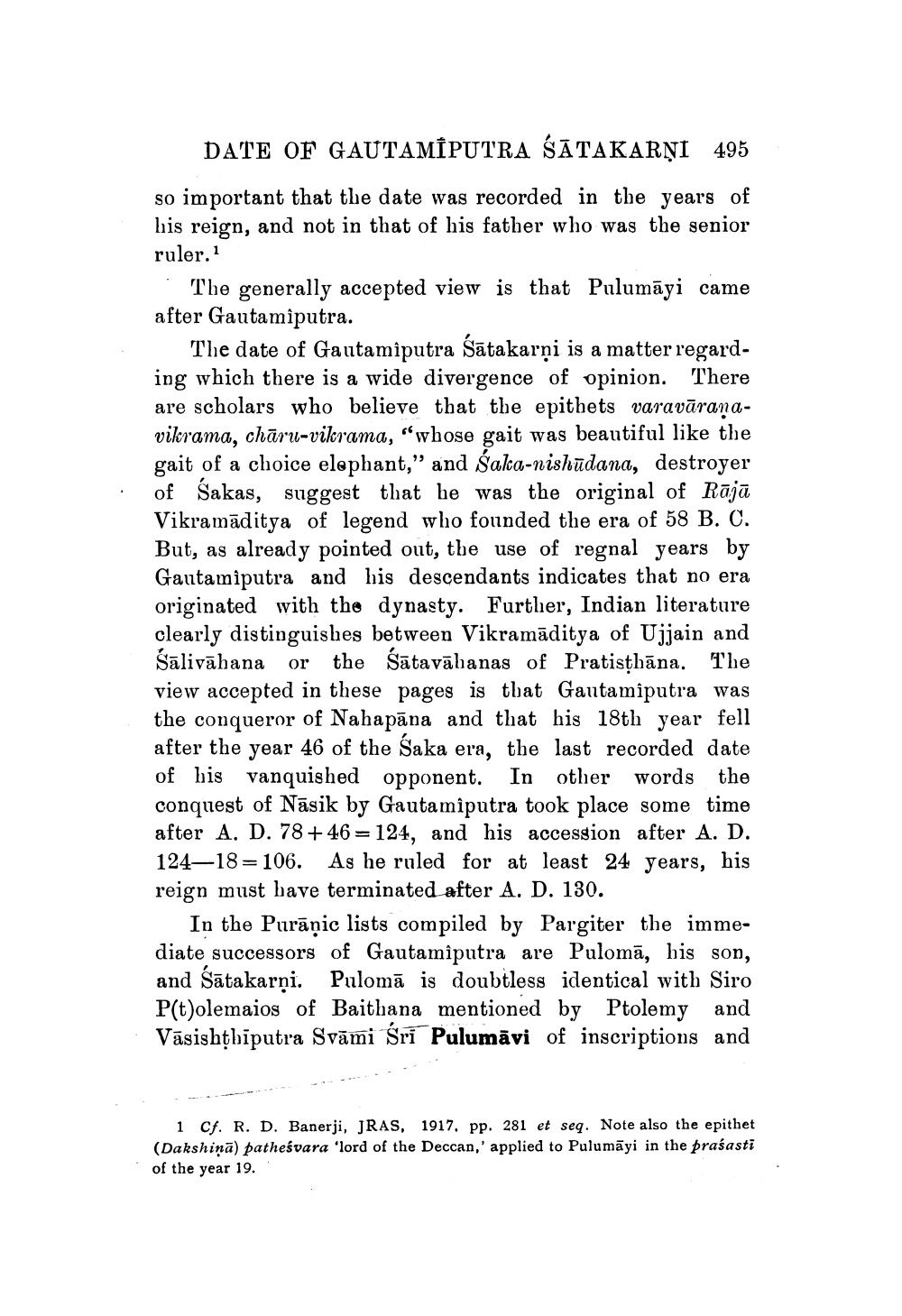________________
DATE OF GAUTAMIPUTRA ŚĀTAKARŅI 495 so important that the date was recorded in the years of his reign, and not in that of his father who was the senior ruler. 1
The generally accepted view is that Pulumāyi came after Gautamiputra.
The date of Gautamiputra Śātakarņi is a matter regarding which there is a wide divergence of opinion. There are scholars who believe that the epithets varavāranavikrama, chāru-vikrama, "whose gait was beautiful like the gait of a choice elephant," and Saka-nishudana, destroyer of Śakas, suggest that he was the original of Rājā Vikramāditya of legend who founded the era of 58 B. C. But, as already pointed out, the use of regnal years by Gautamiputra and his descendants indicates that no era originated with the dynasty. Further, Indian literature clearly distinguishes between Vikramāditya of Ujjain and Śālivāhana or the Šātavāhanas of Pratisthāna. The view accepted in these pages is that Gautamiputra was the conqueror of Nahapāna and that his 18th year fell after the year 46 of the Saka era, the last recorded date of his vanquished opponent. In other words the conquest of Nāsik by Gautamiputra took place some time after A. D. 78+46 = 124, and his accession after A. D. 124–18=106. As he ruled for at least 24 years, his reign must bave terminated after A. D. 130.
In the Purāņic lists compiled by Pargiter the immediate successors of Gautamiputra are Pulomā, his son, and śātakarņi. Pulomā is doubtless identical with Siro P(t)olemaios of Baithana mentioned by Ptolemy and Vāsishtbiputra Svāmi Sri Pulumāvi of inscriptions and
1 Cf. R. D. Banerji, JRAS, 1917, pp. 281 et seq. Note also the epithet (Dakshinā) patheśvara 'lord of the Deccan,' applied to Pulumāyi in the praśasti of the year 19.




